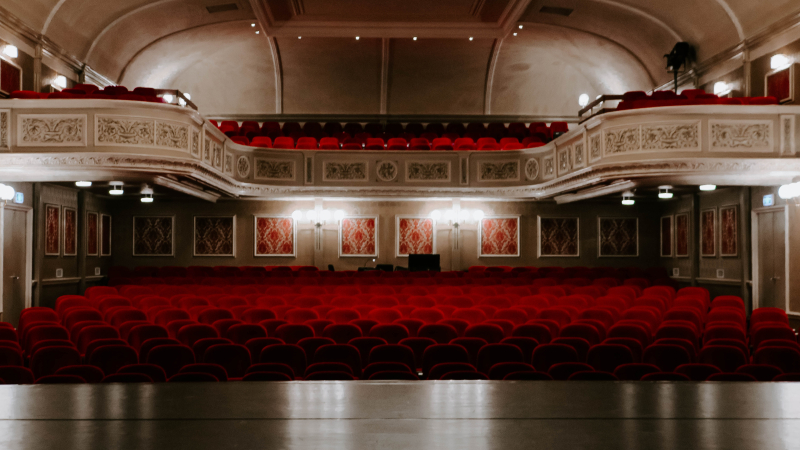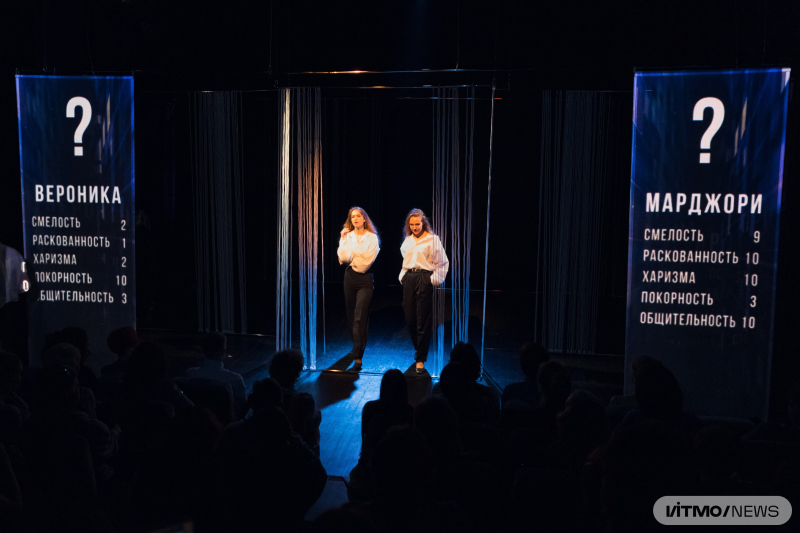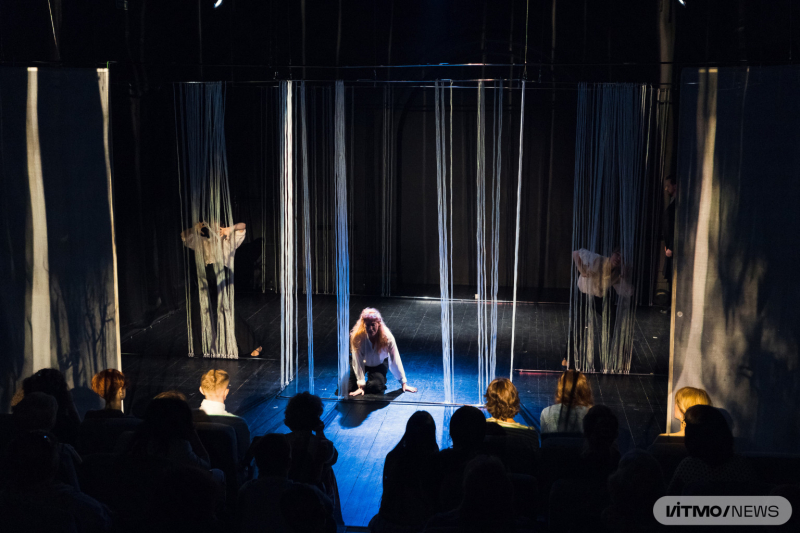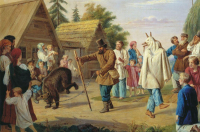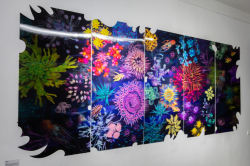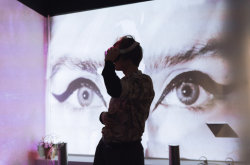The project Live Laboratory “Digital Stage” has been active in St. Petersburg since last fall. It brings together the city’s stage and art directors, playwrights, and theater audiences, who together create digital sets for theatrical plays.
Organized by the Social Drama Theater, the initiative partnered up with ITMO, the St. Petersburg Stieglitz State Academy of Art and Design, the Alexandrinsky Theatre, the Lensovet Theatre, and ITMO’s FabLab workshop.
“In recent years, digital technologies have been gradually becoming a larger part of theater. With them comes a new generation of viewers, who are used to new media, such as cinema, games, blockchain, and others. In response to this changed audience, the plays, as well as the technologies and dramatic devices they use, evolve accordingly. Large-scale commercial productions do a great job of incorporating new media, while classical theaters usually opt for more conventional ones, such as video footage. At the same time, stage and art directors often lack knowledge of the digital field, including sound, digital, and interactive art, or video and digital formats,” explains Alexandra Irityan-Irisova, a co-organizer of the initiative and a curator of cultural projects at CLD ITMO.
It is this gap in communication between the theater community and digital experts that the initiative is aiming to fill. That’s why it welcomed specialists from both worlds, including designers, media artists, sound directors, and others.
In total, the project involved 10 interdisciplinary teams (about 100 participants), each featuring students of ITMO’s Lighting Design Master’s program. In collaboration with experts from ITMO’s FabLab workshop, each team developed mockups of theater sets which they later presented at an exhibition held by the Museum of Theatrical and Musical Art. Two projects were picked as winners: the set for The Tiger Rising was chosen by the visitors, while the Fear set was selected by the expert board.
These projects were turned into real-world sets that premiered with their respective plays on the stage of the Lensovet Theatre.
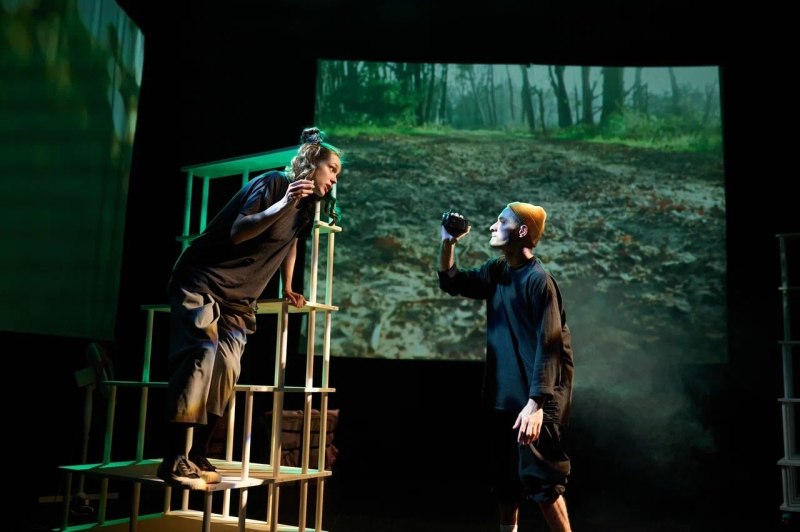
A scene from the play The Tiger Rising. Photo by Alexandra Vildtgrube
What scares a neural network?
Fear is based on two 20th-century short stories: Bernice Bobs Her Hair by F. Scott Fitzgerald and Fear by Stefan Zweig. This performance is an exploration of social taboos and behavioral patterns that destroy our lives – and, importantly, ways to break free from them. While the first act of the play depicts the angst coming from the outside world, the second act dwells on the inner fears of each character.
This performance was created by students of the city’s art and drama universities: Elizaveta Kholmushina, Ksenia Voronenko, Andrey Oleynik, Tatiana Yakovleva, Maria Trefilova, Maria Karavayeva, and Vladimir Kustov. They were assisted by ITMO experts Alexandra Irityan-Irisova, Ilya Filippov (an engineer and lecturer at the Lighting Design Master’s program), and Natalia Bystryantseva ( an associate professor and the head of the program).
For their digital set, the artists used a projection screen and moving tubes that represent threads and hair. During the performance, actors interact with this set and change it in response to the plot. Projectors bring the whole play together, creating an AR effect – for instance, they provide descriptions of each character to help the audience understand their motivation.
Among the content used by the artists is multimedia generated by Midjourney and Stable Diffusion. This was a creative decision: what better way to display fear than through a fusion of the collective unconscious?
All the technologies involved turn Fear into an interactive play that lets the audience communicate with the characters through an online poll. These choices influence the play’s outcome, turning viewers into playwrights.
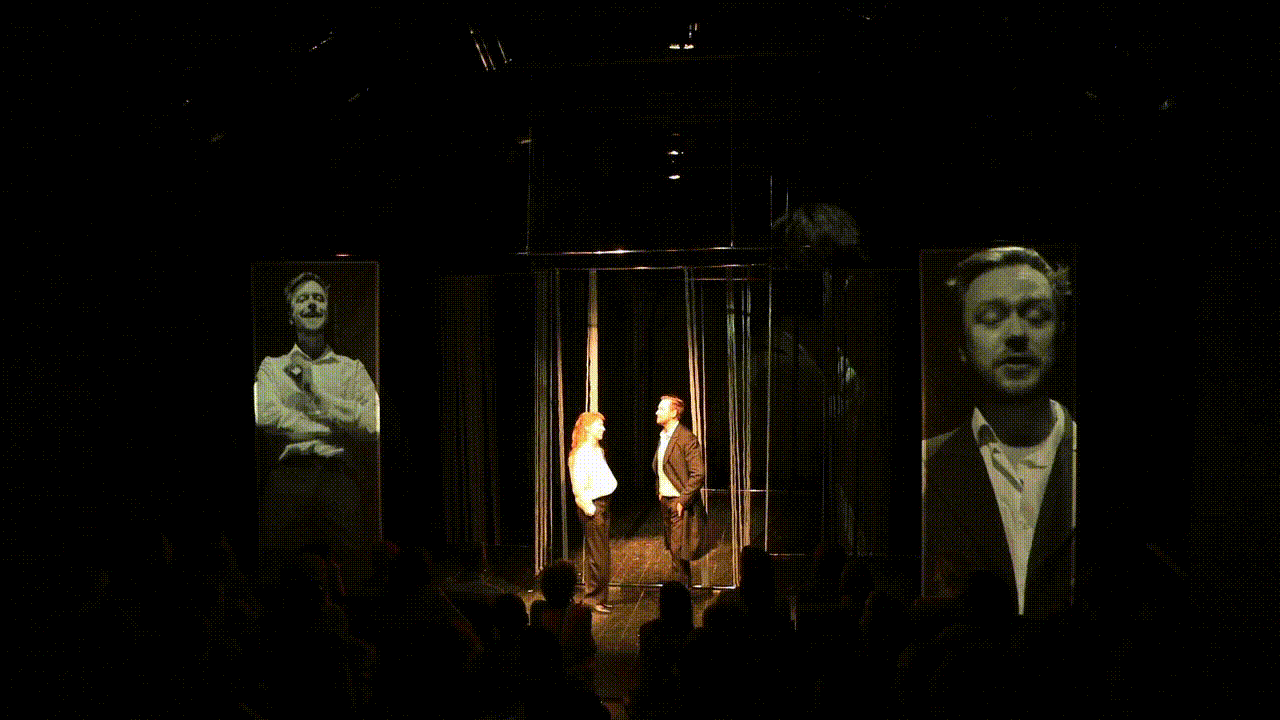
A scene from the play Fear. Video by Dmitry Grigoryev / ITMO.NEWS
A holographic tiger
The Tiger Rising is based on the eponymous story by American author Kate DiCamillo. The plot follows a twelve-year-old boy, Rob, who lost his mother and is bullied at school. Once, he finds a caged tiger in the forest – and the animal becomes the boy’s only solace in life. Like a wild animal, all the bottled up fears and emotions may one day escape their cage and run loose.
On the project’s team was Daria Klimova, a student in the Lighting Design Master’s program, as well as students of art and drama universities: Alisa Feoktistova, Viktoria Sleptsova, Marina Khomutova, and Diana Shapiro. This project was assisted by the same team of experts: Alexandra Irityan-Irisova, Ilya Filippov, and Natalia Bystryantseva.
Three projection screens make up the digital set of the performance – the film footage screened on them complements the play. For instance, some of the characters appear only in the digital form and interact with the actors present onstage. Additionally, the screens display video art and animation.
“Thanks to the lab, we had the chance to try different digital sets while making the mockup, so as to pick the best for the actual stage. With the projection screens we were able to fully immerse our audience into the atmosphere of the story. There, we show the world through the eyes of the main character: the forest is filmed from below and the tiger is made up of several big parts, because the whole animal looks like a giant to the boy,” shared Daria Klimova.
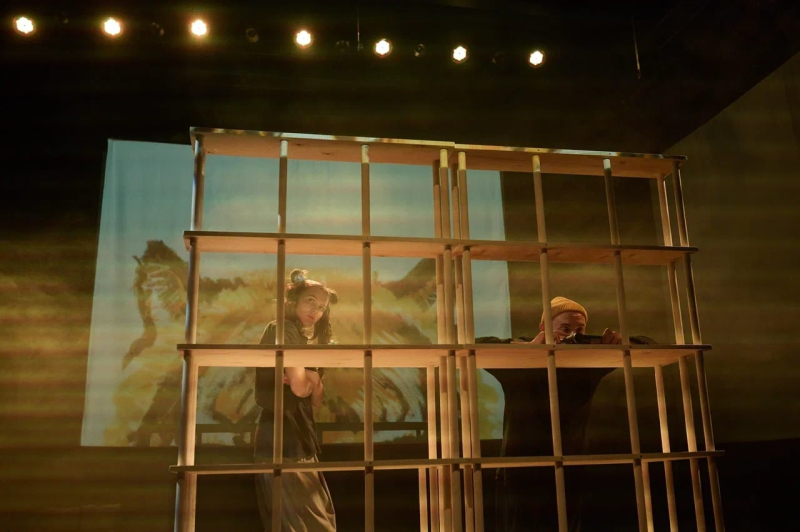
A scene from the play The Tiger Rising. Photo by Alexandra Vildtgrube
Throughout the performance, the audience doesn’t get to see the whole tiger, only its ears, paws, back, and tail. This way, the animal seems ginormous, as if it is everywhere. In the end, when the animal is set free, the tiger turns digital with its hologram projected onto a cloud of smoke.
The Live Laboratory “Digital Stage” project is supported by the Presidential Foundation for Cultural Initiatives.
